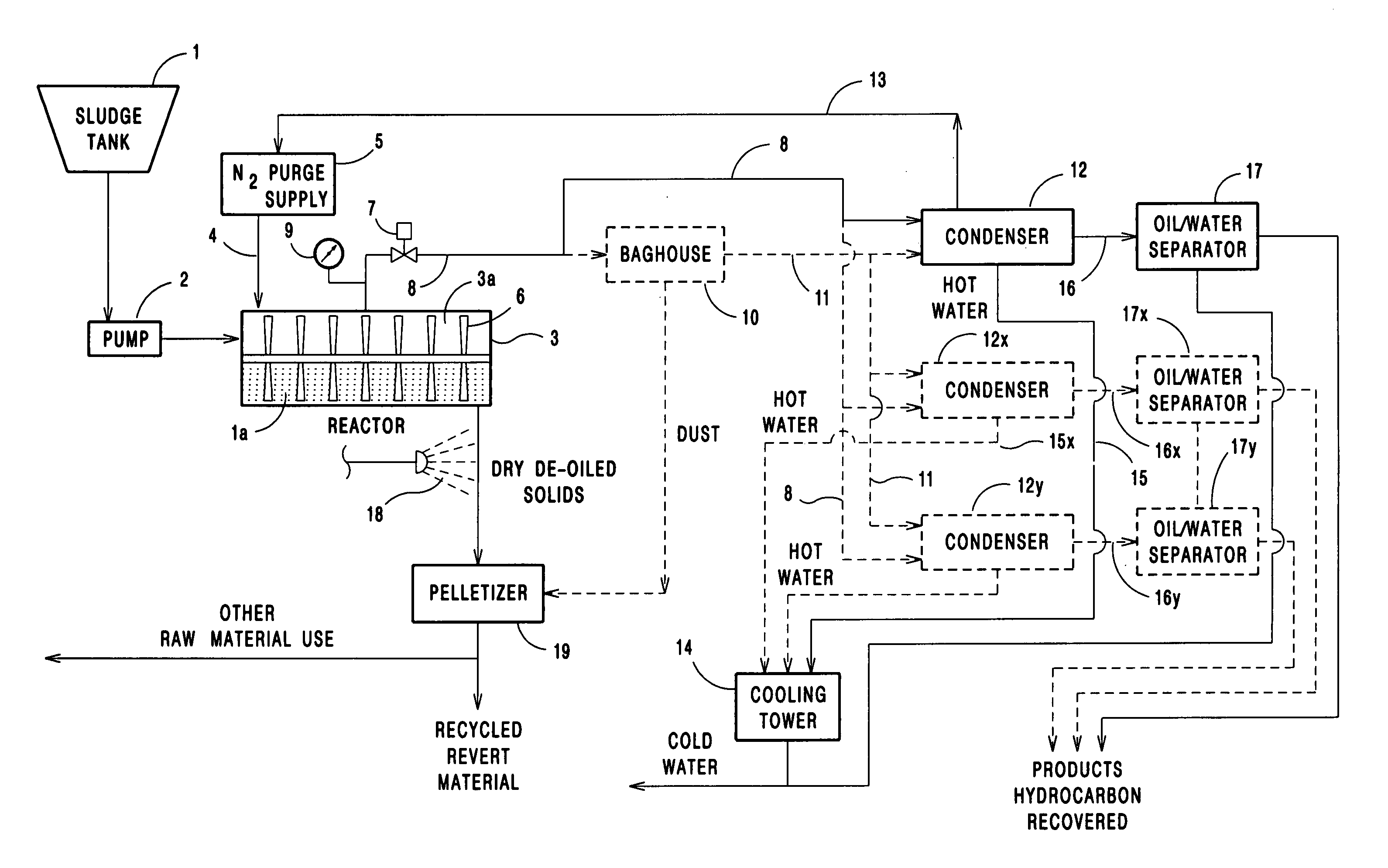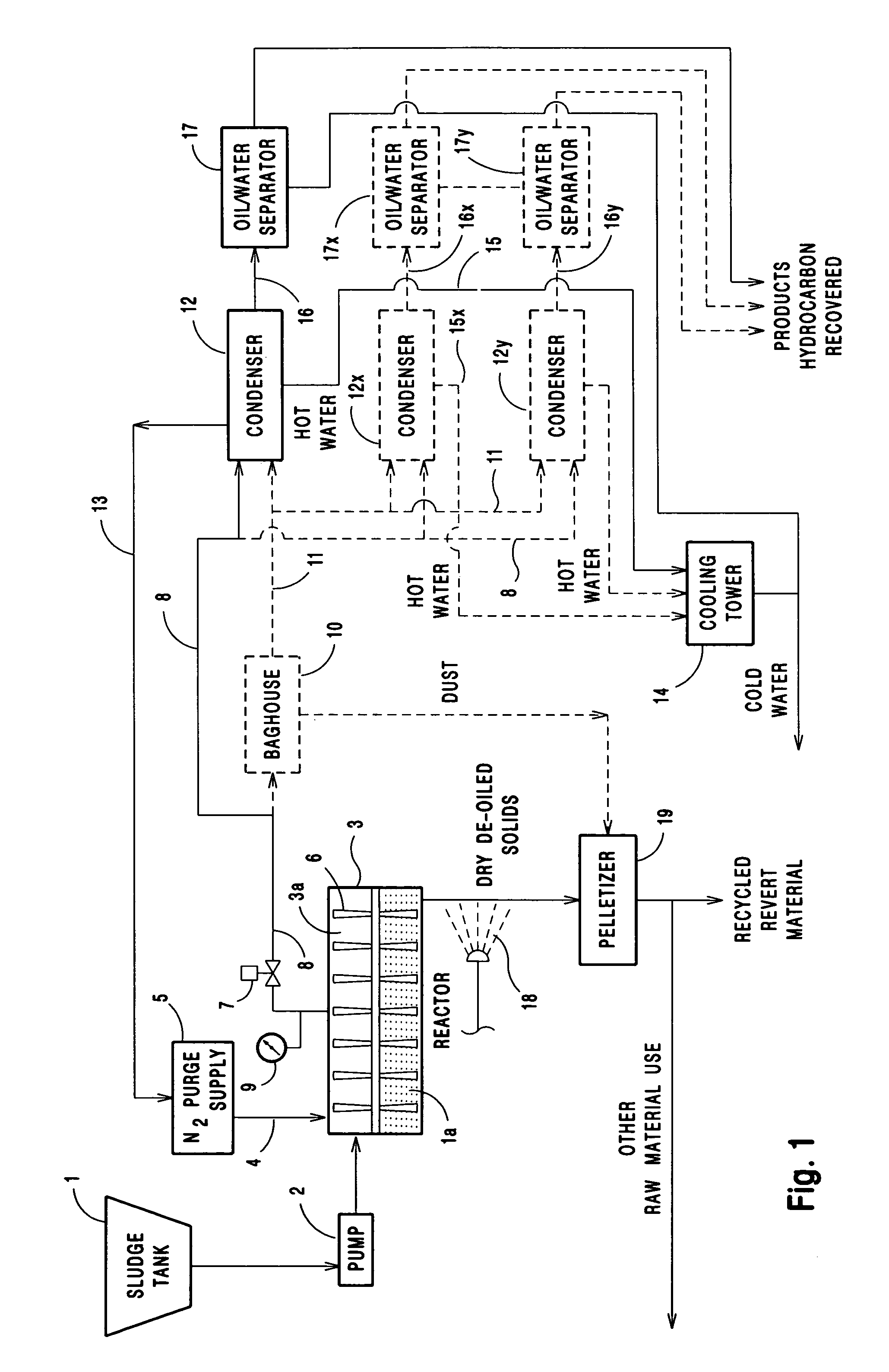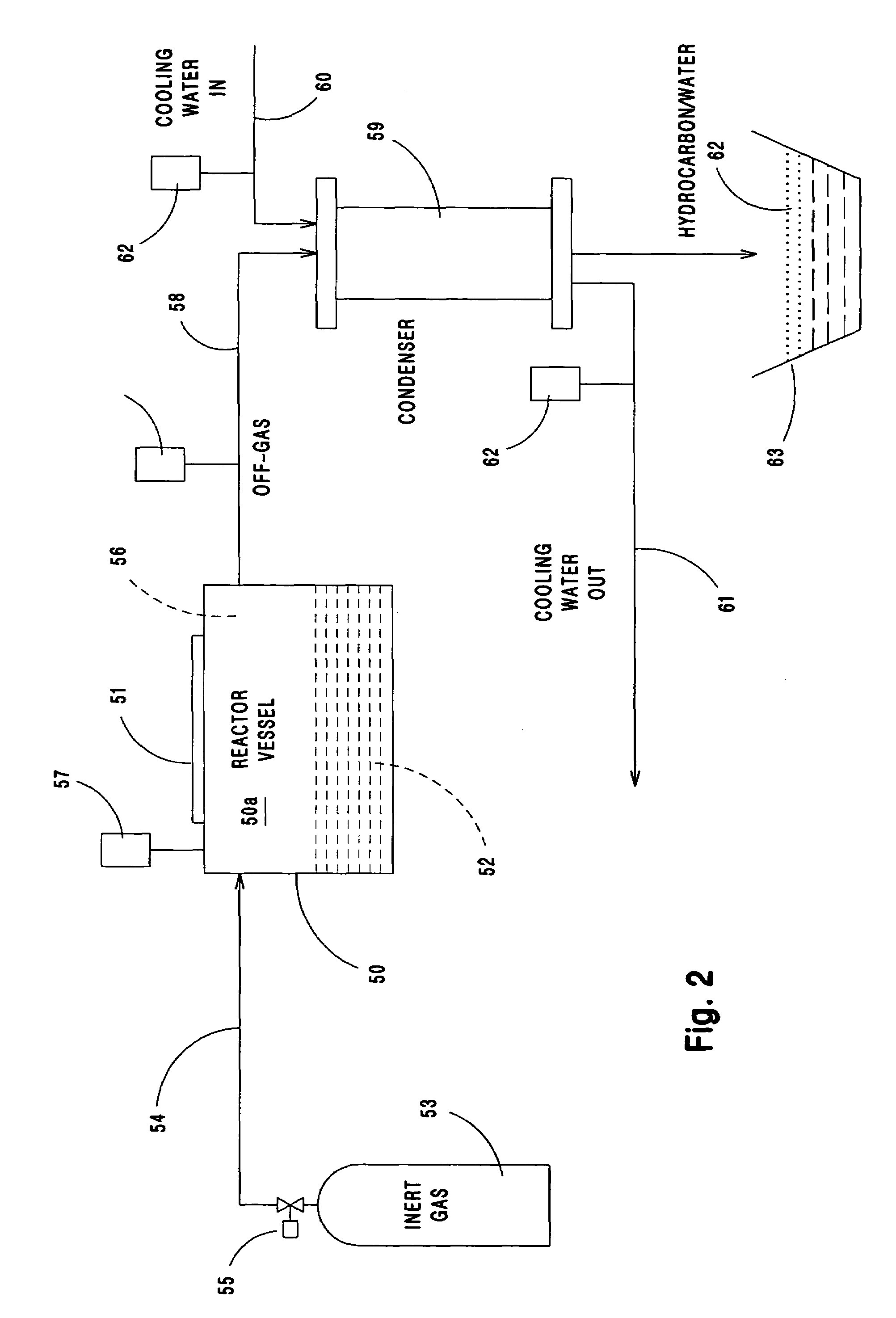Process for de-oiling steelmaking sludges and wastewater streams
a technology for deoiling steelmaking sludge and wastewater streams, which is applied in the direction of blast furnaces, drying solid materials, and using combination processes, etc., can solve the problems of difficult to recycle valuable iron oxides back into the steelmaking operation, and difficult to handle sludg
- Summary
- Abstract
- Description
- Claims
- Application Information
AI Technical Summary
Benefits of technology
Problems solved by technology
Method used
Image
Examples
example 1
[0025]In the event oily mixture 1a comprises certain amounts of finely sized solids, water, and a particular single hydrocarbon, for example a light, a single heating cycle raises the chamber temperature through a temperature range that includes the steam surge temperature and a target temperature suitable for vaporizing the single hydrocarbon, in this instance 550° F. (288° C.) for the light oil. As the chamber temperature is elevated from ambient temperature to the target temperature, the above-mentioned steam surge removes any oil clinging to the solid particle surfaces. As the temperature approaches target temperature, the light oil begins to vaporize, and complete vaporization of the oil is realized at target temperature. The heating cycle is discontinued when the OEM 9 indicates that there are no hydrocarbon vapors evolving from the heated mixture. The reactor vessel 3 is then purged with hot nitrogen gas from supply 5, and the condensate from condenser 12 is fed along line 16...
example 2
[0026]When oily mixture 1a is, for example HMS sludge, comprising certain amounts of solids, water, and two or more particular hydrocarbons, i.e. light oil and grease from rolling mill stands, the de-oiling process includes a first and a second heating cycle. The first heating cycle includes the temperature that generates the steam surge within the oily mixture to free sticky or viscid hydrocarbons from the solid particle surfaces, and a lowest, or first, effective temperature for vaporizing one of the hydrocarbons contained in the oily mixture. In this instance, the first effective temperature is an exemplary 550° F. (288° C.), the boiling point temperature for the light oil. The off-gas is fed to condenser 12, and the condensate is fed along line 16 to a separator 17 where it is separated into water and a light oil or first hydrocarbon product. When the CEM 9 indicates an absence of hydrocarbon vapors in the off-gas, chamber 3a is purged with hot nitrogen gas to remove any remaini...
example 3
[0028]Where oily material 1a comprises certain amounts of solids, water, and at least three different hydrocarbons, for example light oil, heavy oil, and grease, the de-oiling process comprises at least three heating cycles. The first heating cycle is operated to raise the chamber temperature through the steam surge temperature range to the lowest effective temperature for vaporizing one of the hydrocarbons contained in the oily mixture as heretofore described above Example 2.
[0029]After the first heating cycle, condensate is separated into water and a first hydrocarbon product using condenser 16 and separator 17, chamber 3a is purged with hot nitrogen, and a second or next successive heating cycle step raises the chamber 3a temperature to a next higher effective temperature for vaporizing one the hydrocarbons contained in the oily mixture. In this example, the chamber temperature is raised to the predetermined boiling point temperature for the heavy oil, about 675° F. (357° C.). Du...
PUM
| Property | Measurement | Unit |
|---|---|---|
| temperature | aaaaa | aaaaa |
| temperature | aaaaa | aaaaa |
| temperature | aaaaa | aaaaa |
Abstract
Description
Claims
Application Information
 Login to View More
Login to View More - R&D Engineer
- R&D Manager
- IP Professional
- Industry Leading Data Capabilities
- Powerful AI technology
- Patent DNA Extraction
Browse by: Latest US Patents, China's latest patents, Technical Efficacy Thesaurus, Application Domain, Technology Topic, Popular Technical Reports.
© 2024 PatSnap. All rights reserved.Legal|Privacy policy|Modern Slavery Act Transparency Statement|Sitemap|About US| Contact US: help@patsnap.com










